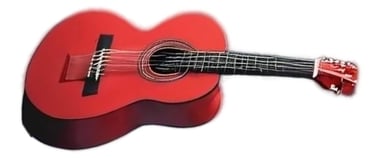
Ultimate Guitar Setup Guide for Perfect Play
Master your guitar sound with this ultimate guitar setup guide. Learn how to set up a guitar like a pro with tips from a top guitar set up book. Let's begin!
magicchords,com
7/14/2025


Guitar Setup Guide
The setup of a guitar is a critical aspect that can significantly influence both sound quality and playability. A proper guitar setup involves a series of meticulous adjustments and maintenance procedures that ensure the instrument functions optimally. For guitarists, whether amateur or professional, this process can mean the difference between a challenging playing experience and one that is enjoyable and rewarding. Understanding the importance of a well-executed setup contributes to a guitarist's overall performance, as it enhances not only the sound produced but also the ease with which the instrument can be played.
A regular maintenance schedule for guitar setup can be a game changer. Instruments, like all mechanical objects, are susceptible to wear and tear over time. Changes in environmental conditions, such as humidity and temperature, can cause wood to warp, affecting the neck and fretboard. This warping can lead to issues such as string buzzing, intonation problems, and an overall decline in sound quality. For guitarists looking to maintain the integrity of their sound, recognizing and addressing these issues through a proper setup is essential. Frequent adjustments and maintenance can restore playability and enhance tonal clarity, ultimately leading to a more satisfying playing experience.
In addition to maintaining playability, a well-executed guitar setup can also provide the opportunity for customization. Factors such as action height, string gauge, and pickup positioning can be fine-tuned to meet the preferences of the player. This level of personalization is particularly valuable for musicians looking to achieve a specific sound or playing style. Thus, a comprehensive understanding of guitar setup is vital for those passionate about their craft. As we delve deeper into the various components and techniques involved in a successful guitar setup, it is crucial to keep in mind the foundational role it plays in enhancing overall musical expression. A proper guitar set up enhances playability and comfort, making practice more effective. Combine this with consistent guitar practice routines to improve faster, build muscle memory, and enjoy smoother chord transitions. Together, they create the foundation for confident, enjoyable playing.
Essential Tools for Guitar Setup
Achieving the perfect sound and feel from your guitar necessitates a careful setup process, which in turn requires a specific set of tools. Every guitarist, whether a novice or a seasoned professional, should have a well-equipped toolkit to facilitate this process. This section will discuss the essential tools that are vital for performing a successful guitar setup.
One of the most fundamental tools in any guitarist's kit is the string winder. This simple yet invaluable tool enables quick and efficient string changes, significantly saving time compared to manual winding. Additionally, a high-quality tuner is indispensable for ensuring that your instrument is in perfect pitch. Whether utilizing a clip-on tuner or a pedal tuner, accurate tuning is crucial for both practice and performance.
Another critical component of a complete setup toolkit is a set of screwdrivers. Guitars often require adjustments to the bridge, pickups, and neck, all of which may involve screws. Having a variety of screwdriver sizes ensures that you can perform these adjustments without damaging the hardware. Furthermore, a string action gauge is an essential tool for measuring the height of the strings above the fretboard. This measurement is pivotal for achieving the desired playability and preventing buzzing sounds during performance.
Additionally, incorporating a capo can assist in testing intonation and string action on different frets, allowing for versatile playability assessments. To complete your toolkit, consider including a ruler for precise measurements and an allen wrench for adjusting truss rods. These tools not only simplify the setup process but also empower guitarists to tune their instruments to their unique sound preferences. By equipping yourself with these essential tools, you can effectively make adjustments to your guitar, resulting in an improved playing experience and enhanced sound quality.
Step-by-Step Guide: How to Set Up a Guitar
Setting up a guitar can significantly enhance its playability and sound quality. This guide provides a comprehensive step-by-step approach to help you achieve a professional setup, enabling you to play with comfort and precision.
First, you will need to check the truss rod. The adjustment of the truss rod is critical for maintaining proper neck relief. Using an appropriate Allen wrench, locate the truss rod nut. If the neck bows forward (too much relief), turn the truss rod clockwise to tighten it; if it bows backward (too little relief), turn it counterclockwise. It is advisable to make small adjustments and wait 24 hours to monitor any changes. Aim for a slight bow that allows for effective string vibration without buzzing.
Next, adjust the action height. Action refers to the height of the strings above the fretboard. A proper setup requires the action to be at a height that balances playability and tone. For a standard electric guitar, an action of approximately 1.6 mm at the 12th fret is a good starting point. Raise or lower the bridge saddles to achieve desired string height, ensuring each string's action is consistent for optimal playability.
Intonation is another vital aspect to address. This ensures that your guitar is in tune along the entire fretboard. To check intonation, use a tuner to compare the pitch of an open string to the pitch when it is fretted at the 12th fret. If the fretted note is sharp, lengthen the string by moving the saddle back; if flat, shorten it by moving the saddle forward. Repeat this process for each string.
Finally, adjust the pickup height for balanced output and tone. A general rule of thumb is to set the pickups about 2-3 mm away from the strings when the strings are pressed at the last fret. An optimal height will prevent distortion while maintaining clarity and sustain, allowing your guitar setup to reach its full potential.
With these adjustments, you can confidently set up your guitar, ensuring it plays beautifully, sounds great, and caters to your personal playing style.
Common Mistakes in Guitar Setup
Setting up a guitar requires a keen understanding of various elements that contribute to optimal performance and sound quality. However, many guitarists, especially those who are new to the setup process, often make common mistakes that can negatively impact their instrument's playability and lifespan. Awareness of these pitfalls is essential to avoid costly repairs or diminished sound.
One frequent error is over-tightening screws. Many guitarists believe that a tighter screw equates to better stability; however, this is not always the case. Over-tightening can lead to stripped threading or even damaging the wood of the guitar. Instead, screws should be tightened to a snug fit, allowing for proper stability without compromising the material integrity.
Neglecting string replacement is another common oversight. Old strings can accumulate dirt and produce a dull sound, affecting the overall tone and playability of the guitar. Guitarists should establish a regular schedule for string changes, especially after heavy use or prolonged periods between performances. Fresh strings not only enhance sound quality but also improve tuning stability, making them crucial for a successful setup.
Misjudging intonation adjustments can lead to tuning discrepancies along the fretboard, frustrating players as they find certain notes out of tune while others remain fine. Proper intonation ensures that the guitar plays accurately at every fret. This involves adjusting the string length at the bridge to align the pitch of each note played, which may take time but is essential for a well-setup instrument.
In summary, avoiding these common mistakes during a guitar setup can greatly enhance the instrument's performance and longevity. By taking the time to learn proper techniques and recognizing potential pitfalls, guitarists can ensure their guitars sound and play their best.
Tips from the Pros: Insights from a Top Guitar Setup Book
In the pursuit of achieving the perfect guitar setup, it is invaluable to draw from the wisdom contained within reputable guitar setup literature. One of the most highly regarded books on this subject provides practical tips that can significantly enhance both the playability and tone of your instrument. Understanding these key recommendations can empower musicians to effectively tailor their guitars to meet their unique playing styles.
First and foremost, establishing a consistent setup routine is essential. The optimal schedule for maintenance should include regular checks on string action, neck relief, and intonation. It is advisable to inspect these elements every time strings are changed, as they can be dramatically affected by environmental changes and playing habits. In addition, maintaining uniformity in your setup process allows for better predictability in performance, ensuring that your instrument feels comfortable and secure during play.
Another crucial aspect highlighted in the book is the significance of precise tuning. A well-tuned guitar not only enhances sound quality but also contributes to the overall playing experience. Professionals suggest employing a reliable tuner to achieve accurate pitch for each string. Once tuned, it is beneficial to play the guitar for several minutes before making any adjustments. This practice allows the instrument to acclimate, leading to more precise intonation adjustments.
Furthermore, sound optimization techniques discussed in the book emphasize the importance of pickup height and tone control. Adjusting the height of the pickups can drastically affect the output level and tonal qualities of the guitar. Additionally, exploring the range of the tone knobs can help to unlock a variety of sounds that frequently go untapped. Experimenting with these adjustments can reveal new sonic possibilities that cater to different musical styles.
By incorporating these professional insights into your guitar setup practices, you can cultivate a deeper understanding of your instrument, ultimately leading to remarkable sonic outcomes and an enriched playing experience.
Expert Advice for Beginners on Guitar Setup
For beginner guitarists, embarking on the journey of setting up their instrument can seem daunting. However, understanding a few fundamental techniques can significantly enhance both playability and sound quality. The first step in a proper guitar setup involves tuning the instrument. This may seem basic, but ensuring that your guitar is accurately tuned is crucial for achieving the desired sound. Utilize electronic tuners or tuning apps that provide visual feedback, making this task easier for novices.
Another essential aspect of guitar setup is adjusting the action, which is the distance between the strings and the fretboard. If the action is too high, it can make playing challenging, while an excessively low action might result in fret buzz. Beginners should test the action and make minor adjustments using the bridge saddles or truss rod. However, it’s vital to proceed with caution in this area. If you are unsure, consulting a professional or seeking guidance from experienced players can help avoid costly mistakes.
String choice significantly influences tone and playability. Beginners are often encouraged to opt for lighter gauge strings as they are easier to play and bend, thus facilitating a more enjoyable learning experience. As you progress, experimenting with different string materials and gauges can help you tailor your sound.
While many aspects of guitar setup can be tackled by beginners, certain complexities may warrant professional assistance. For instance, neck relief adjustments or intonation issues should be addressed by an experienced technician to ensure the guitar performs optimally. By understanding the balance between DIY and professional help, beginner guitarists can maintain their instruments effectively and focus on developing their musical skills with confidence.
Mastering your sound through the proper setup of your guitar is paramount for any musician. Throughout this guide, we have thoroughly outlined the various components that contribute to an ideal guitar setup. From adjusting the action and intonation to ensuring optimal pick-up height, each aspect plays a vital role in achieving the best possible tone and playability. Understanding these elements not only enhances your musical experience but also empowers you to make informed adjustments that align with your personal preferences.
It is essential to recognize that a well-executed guitar setup is not a one-time event, but rather an ongoing process that evolves with your playing style and technique. As such, we encourage you to regularly assess and fine-tune your instrument. Remember, the nuances of tone can be significantly affected by even the smallest adjustments, making it crucial to approach your setup methodically.
For those eager to deepen their knowledge, numerous resources are available that provide insight into advanced guitar setup techniques. Online tutorials, video demonstrations, and workshops can enrich your understanding and skills, allowing you to explore the subtleties of sound even further. Engaging with fellow musicians in forums or local communities can also offer valuable tips and experiences that enhance your setup journey.
The goal of mastering your sound is to achieve a personal connection with your guitar. By implementing the strategies discussed in this guide, you are well on your way to realizing your desired tone and playability. Invest the time and effort into your setup, and you will find that the rewards in sound and enjoyment of your instrument are immeasurable.
Setting up your guitar properly is one of the most important steps you can take to improve your sound, comfort, and overall playing experience. Whether you’re a complete beginner or an experienced guitarist, a reliable guitar setup guide can make all the difference in your performance and tone. This blog post will walk you through everything you need to know about how to set up a guitar, from adjusting the truss rod and action to setting intonation and tuning stability.
A well-set-up guitar not only feels better to play but also helps you progress faster by eliminating unnecessary obstacles like fret buzz or hard-to-press strings. You don’t need to be a professional technician—just a bit of patience and the right guidance can take your guitar to the next level. Think of it as fine-tuning your instrument to match your personal playing style.
For those who prefer structured learning, we’ll also highlight a recommended guitar set up book that covers each step in more detail, perfect for DIY-minded players. Whether you play acoustic or electric, this guide is here to help you create the perfect playing setup. Let’s dive in and make sure your guitar works for you, not against you.


If you're just starting your musical journey, our Simple Guitar Lessons for Beginners offer an easy and effective way to build your skills. With step-by-step guidance, you’ll quickly gain confidence while learning chords, strumming, and songs at your own pace.
Playing the guitar can be a powerful tool for reducing stress and improving focus. Guitar for Mental Wellness explores how regular practice boosts mood, encourages mindfulness, and offers a creative outlet that supports emotional balance and overall mental health.




